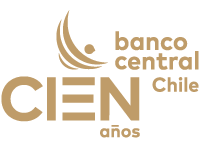Monetary Policy Meeting – July 2021
Press
Wednesday, July 14, 2021
At its Monetary Policy Meeting, the Board of the Central Bank of Chile decided to raise the monetary policy interest rate by 25 basis points, to 0.75%. The decision was adopted by the unanimous vote of its members
On the external front, incoming information show that the global outlook continues on a path of recovery, consolidating prospects for this year. This is particularly noticeable in countries displaying more controlled epidemiological conditions —thanks to either effective sanitary containment measures or the progress of vaccination campaigns—, which have been able to continue with their plans to reopen their markets. However, many emerging economies are still lagging, while the spread of new strains of Covid-19 has emerged as a new risk factor. Financial markets have been influenced by the latest epidemiological developments and by surprises in actual data in the main economies. Thus, long-term interest rates have accumulated moderate declines, the dollar has appreciated against other currencies and stock markets have had mixed results, all within a context of persistent cost pressures, whether due to difficulties in the supply of goods, rising transportation costs and/or high input and commodity prices. Some monetary authorities, particularly the Federal Reserve, see these pressures as transitory, mitigating concerns about the recent rises in inflation. At the same time, several central banks—mainly those of commodity-exporting countries—have announced or begun launching a process of monetary policy normalization.
Chile has seen further increases in market yields since the previous Meeting. In the case of nominal two-year term rates, an increase of around 110 bp was observed, explained by factors such as the change in the macroeconomic and monetary policy outlook. Regarding longer-term rates, the BCP10 saw significant volatility during the period, widening the gap with respect to its external peers. The peso depreciated, reaching its highest levels so far this year, which has coincided with the recent drop in copper prices and the worldwide strengthening of the U.S. dollar.
With respect to bank credit, interest rate variations have been more contained, while the annual fall in the stock of commercial loans (-4.5% in real terms in June) is combined with steady positive flows in recent months, in an environment characterized by a high annual comparison base and ongoing rescheduling, refinancing and amortizations, together with the operation of special liquidity and guarantee programs. The second-quarter Bank Lending Survey reported a drop in demand by companies, both for investment and working capital purposes. Consumer loans continued to reduce their annual contraction (-14.6% in real terms in June), responding to the abundance of household liquidity, while flows in the mortgage segment look stable.
As for activity, the May Imacec rose 18.1% annually, a figure that exceeded expectations and which led it to return to pre-pandemic levels. In seasonally-adjusted terms, the Imacec increased 2.6% month on month, showing growth in most sectors. Worth noting was the expansion of trade activity (51.3% annually), explained by highly dynamic consumption, which in turn has been boosted by the massive fiscal transfers and withdrawals of pension savings. The former have triggered a significant increase in public spending above the plans foreseen at the beginning of the year, which translates into a record-high fiscal impulse in 2021. In this context, private growth prospects for the year have continued to improve, up to 8% in July’s Economic Expectations Survey. The labor market continues to be influenced by a number of opposing forces: while total employment is still far from pre-pandemic levels and the unemployment rate remains at around 10%, administrative records reveal a recovery of formal salaried employment, vacancies are rising significantly and higher annual growth is seen in the wage index. This points to an unconventional behavior of the labor supply, affected by quarantines and state aid to informal and self-employment, as well as by the departure of hundreds of thousands of women from the labor market due to increased family responsibilities.
Headline inflation rose to 3.8% annually in the June measurement. The main factor behind the increase in inflation of recent months has been the behavior of fuel prices, because of both recent months’ increases and a low comparison base. Food prices, on the other hand, have been reducing their contribution. The annual variation of core CPI—without volatiles—is lower, remaining slightly above 3% annually. Regarding expectations, in the one-year term, the median of the Economic Expectations Survey (EES) and the Financial Traders Survey (FTS) rose to 3.3% and 3.4% annually. Two years ahead, both surveys are still around 3% annually.
The Board estimates that this aggregate background information is similar to the economic trajectory foreseen in the base scenario of the June Monetary Policy Report. Thus, the activity gap will continue to close rapidly, accompanied by a high fiscal impulse and a strongly dynamic consumption. This creates the conditions for a gradual withdrawal of the monetary impulse, which is expressed in a 25bp increase in the MPR at this meeting, where the signals obtained so far make the scenarios that mark the limits of the rate corridor of the June Report unlikely. In any case, even in a context of gradual normalization, monetary policy will continue to accompany the recovery of the economy. Thus, starting from one of the most expansive levels among comparable economies, the Board anticipates that the MPR will be below its neutral value throughout the two-year policy horizon.
The minutes of this Monetary Policy Meeting will be published at 8:30 hours on Friday, 30 July 2021. The next Monetary Policy Meeting will be held on Tuesday, 31 August 2021, and the statement thereof will be published at 18:00 hours the same day.
